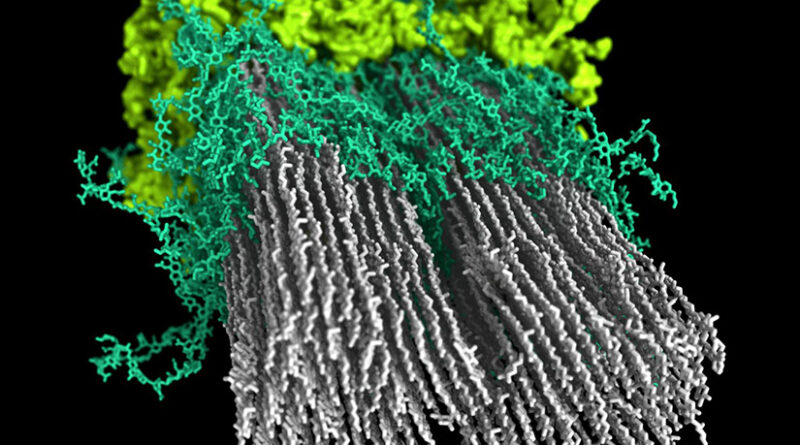Answers to Macromolecular Puzzle Hold Key to More Efficient Utilization of Biomass for Fuels, Chemicals, and Materials A multidisciplinary approach has enabled researchers with the U. S. Department of Energy’s (DOE’s) National Renewable Energy Laboratory (NREL) to quantitatively define the relative positioning and arrangement of the polymers in Populus wood and to create a computer model that details the findings.
The research into solving this macromolecular puzzle, which appears in the journal z , may hold the key to efficiently disentangle and deconstruct biomass for conversion to fuels, chemicals, and materials. Scientists have long known that the secondary cell wall of hardwoods involves three major biopolymers—cellulose, hemicellulose, and lignin—but detailed and quantitative understanding of how these polymers are arranged relative to each other has remained elusive. Bennett Addison, the lead nuclear magnetic resonance (NMR) spectroscopist at NREL and first author of the journal article, used the analogy of a demolished house: “The pile of rubble is still composed of wood, concrete, drywall, and glass, but it’s certainly no longer a house.
It’s how the individual constituent components are arranged relative to each other that matters. Similarly, you can’t just take cellulose, hemicellulose, and lignin and throw them into a pile and call it a plant secondary cell wall. ” The researchers capitalized on advances in the field of solid-state nuclear magnetic resonance (ssNMR) technology to infer refined details about the structural configuration of the cell wall, the intermolecular interactions, and the relative positions of the biopolymers within the wood.
The paper is “ Atomistic, Macromolecular Model of the Populus Secondary Cell Quantitatively Informed by Solid-State NMR . ” The co-authors, all from NREL, are Lintao Bu, Vivek Bharadwaj, Meagan Crowley, Anne Harman-Ware, Mike Crowley, Yannick Bomble, and Peter Ciesielski. The research was funded by two DOE research centers, The Center for Bioenergy Innovation from the Biological and Environmental Research program and the Feedstock-Conversion Interface Consortium from the Bioenergy Technologies Office.
The use of ssNMR allowed researchers to construct a computer model of the cell wall, which provided greater insight into the role lignin plays. Considered a recalcitrant part of the cell wall when it comes to breaking down biomass, lignin is notable for lending plasticity to a plant. “Articulating results into a computationally accessible molecular model is fundamentally more useful than a conceptual illustration,” said Ciesielski, the co-corresponding author of this study from NREL’s Renewable Resources and Enabling Sciences Center.
“It allows us to rapidly evaluate hypotheses about the roles and behaviors of each component in a physics-based environment and unlocks the power of modern high-performance computing. This will help design more efficient deconstruction approaches or identify molecular modifications to produce better biobased materials. ” Bomble, the other co-corresponding author of this study from NREL’s Biosciences Center, said prior research into the makeup of a secondary cell wall relied on techniques that overall yielded incomplete or inconclusive results.
Those findings produced drawings with approximations of the connections between the biopolymers. “Here’s the first time we really have a glimpse of the structure altogether with a quantitative technique providing that level of detail,” Bomble said. “That’s never been achieved before.
” Learn more about bioenergy research at NREL . Article courtesy of NREL . LinkedIn WhatsApp Facebook X Email Mastodon Reddit.
From: cleantechnica
URL: https://cleantechnica.com/2024/01/05/nrel-researchers-produce-1st-macromolecular-model-of-plant-secondary-cell-wall/
